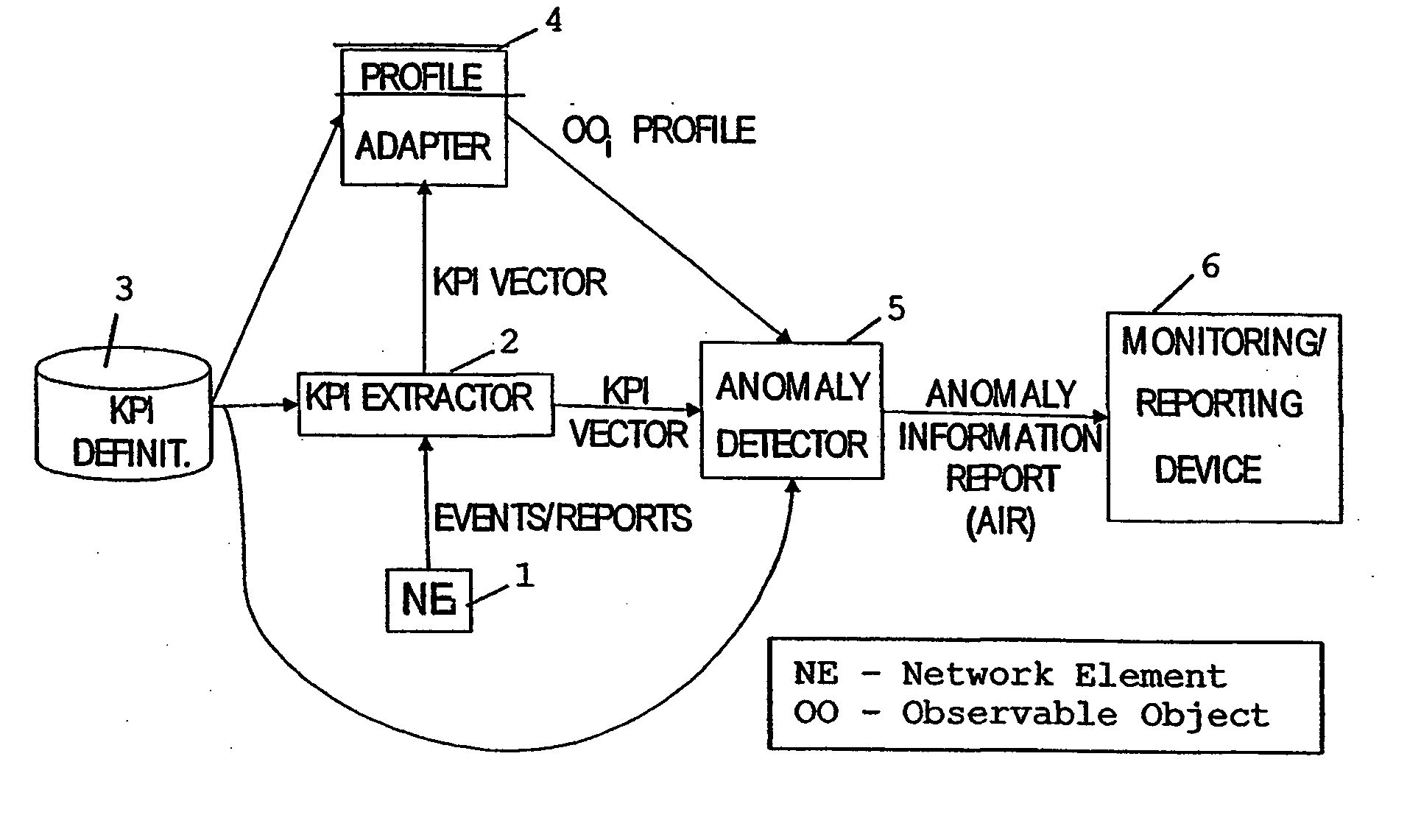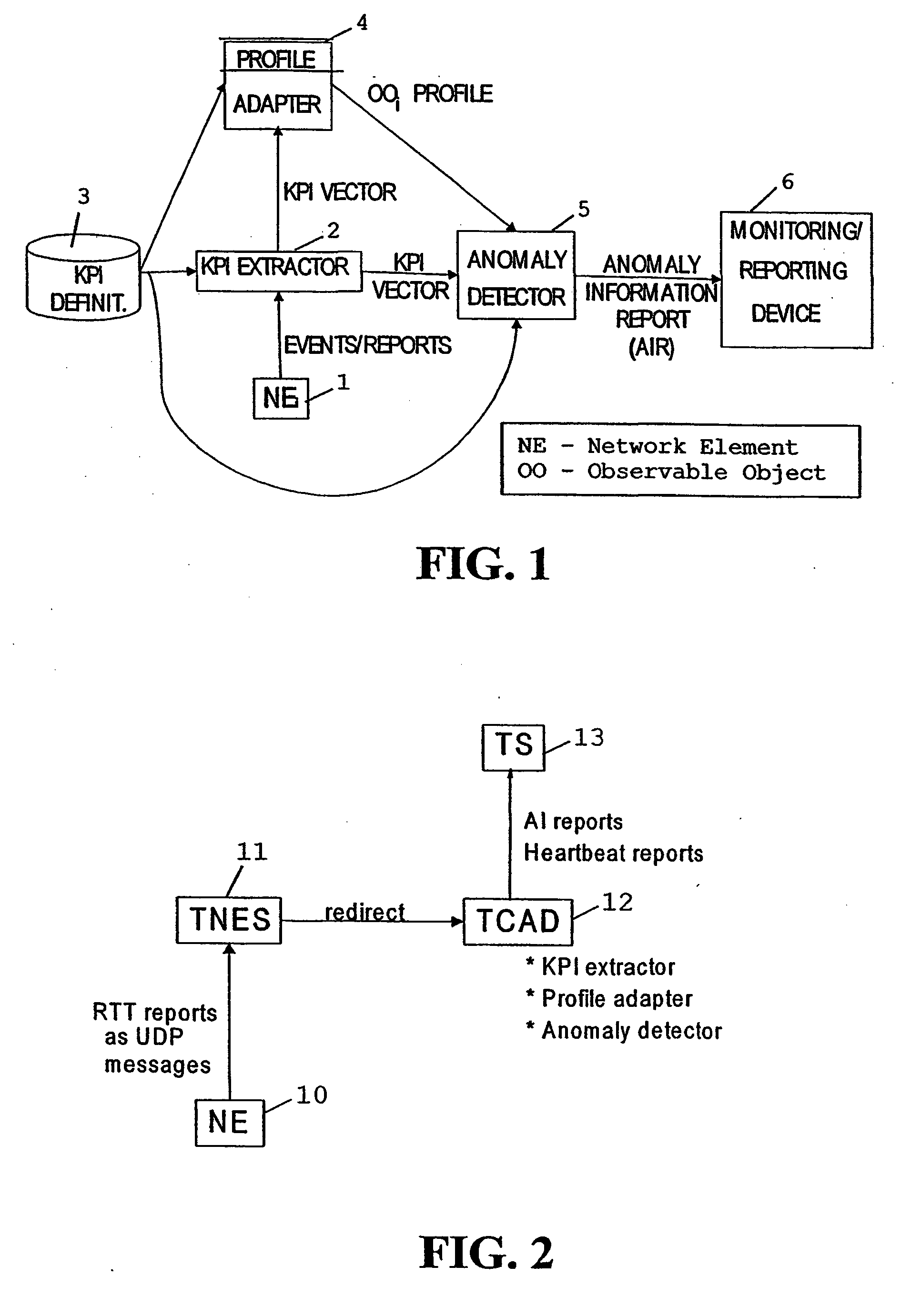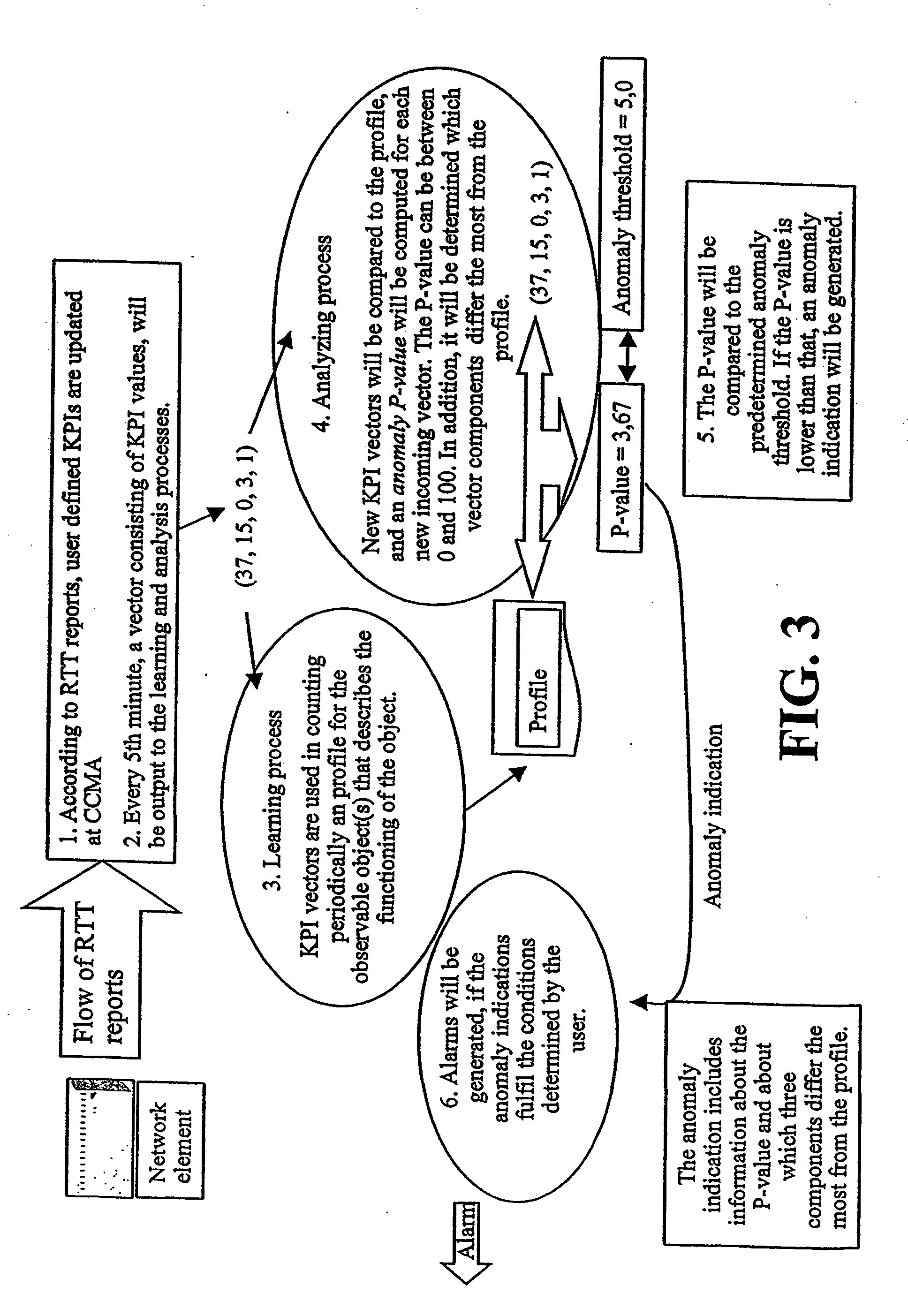System, device and method for automatic anomally detection
- Summary
- Abstract
- Description
- Claims
- Application Information
AI Technical Summary
Benefits of technology
Problems solved by technology
Method used
Image
Examples
first embodiment
[0092] FIG. 1 shows components of a first embodiment and their interaction. The components include one or more observable objects (OO), e.g. network elements (NE) 1. The NE 1 can be of any type that reports about its performance by some kind of reports. A device or function 3, e.g. a storage, includes KPI definitions, i.e. definitions of generated KPIs that are created based on the information sent by Network Element 1. The KPI definitions can be common to all network elements of the same type, or can be specific for each element. The KPI definitions may be changeable on the fly, e.g. immediately when an operator changes the definitions, and can be given either as rules or formulas or in any other format that can be executed by a computer.
[0093] A KPI extractor 2 parses incoming messages from the NE 1 and eventually further NEs, and creates KPI vectors that describe the behavior of NE 1 or each NE. The KPI extractor 2 works on-line in real time, and delivers KPI vectors to a profile...
second embodiment
[0111] the invention described below and shown in FIGS. 4 to 7 relates to anomaly detection in a computer or in telecommunication networks in which the concept of normal behaviour varies with time. The details of this embodiment as described below and shown in FIGS. 4 to 7 can be arbitrarily combined with the details of the above discussed embodiments. More particularly, this embodiment relates especially to teaching an anomaly detection mechanism. An example of such an anomaly detection mechanism is based on self-organizing maps (SOM).
[0112] A problem with known SOM-based ADS mechanisms is that they are restricted to detecting problems in systems having a well-defined normal behaviour. In most telecommunication networks the concept of "normal behaviour" is, at best, vague. A network element's behaviour at peak time is very different from its behaviour at the quiet hours just before dawn. More precisely, most often it is the users' who cause the variation in what is called normal. I...
PUM
 Login to View More
Login to View More Abstract
Description
Claims
Application Information
 Login to View More
Login to View More - R&D
- Intellectual Property
- Life Sciences
- Materials
- Tech Scout
- Unparalleled Data Quality
- Higher Quality Content
- 60% Fewer Hallucinations
Browse by: Latest US Patents, China's latest patents, Technical Efficacy Thesaurus, Application Domain, Technology Topic, Popular Technical Reports.
© 2025 PatSnap. All rights reserved.Legal|Privacy policy|Modern Slavery Act Transparency Statement|Sitemap|About US| Contact US: help@patsnap.com



